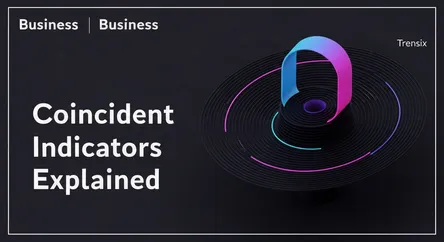Business
Coincident Indicators Explained

Discover coincident indicators, key metrics that show the current state of the economy, offering a real-time snapshot of its health and performance.
What is it?
Coincident indicators are economic metrics that change at approximately the same time as the overall economy, providing a real-time snapshot of its current health. Unlike leading indicators that predict future trends or lagging indicators that confirm them after the fact, coincident indicators tell us what is happening right now. Key examples include Gross Domestic Product (GDP), which measures total economic output, industrial production, total personal income, and manufacturing and trade sales. Economists and analysts use a composite index of these indicators, like the one published by The Conference Board, to assess the current phase of the business cycle, determining if the economy is expanding or contracting.
Why is it trending?
In a climate of economic uncertainty, with frequent discussions about inflation, interest rates, and potential recessions, coincident indicators are under intense scrutiny. They provide a vital reality check against speculation. When leading indicators send mixed signals, policymakers at central banks, like the Federal Reserve, rely on current data like personal income and industrial production to make informed decisions about monetary policy. For investors and businesses, these figures help validate economic forecasts and guide immediate strategic choices, cutting through the noise to see the economy's present condition.
How does it affect people?
Coincident indicators have a direct impact on daily life. Strong reports on personal income and sales can boost consumer confidence, leading to increased spending and a healthier stock market, which benefits retirement savings. Conversely, a sustained decline in industrial production can signal an economic downturn, potentially leading to business cutbacks, hiring freezes, and job losses. These metrics influence the interest rates on mortgages and loans, as well as government spending decisions. For individuals, understanding these indicators offers insight into job security and the overall financial climate, aiding in personal financial planning.